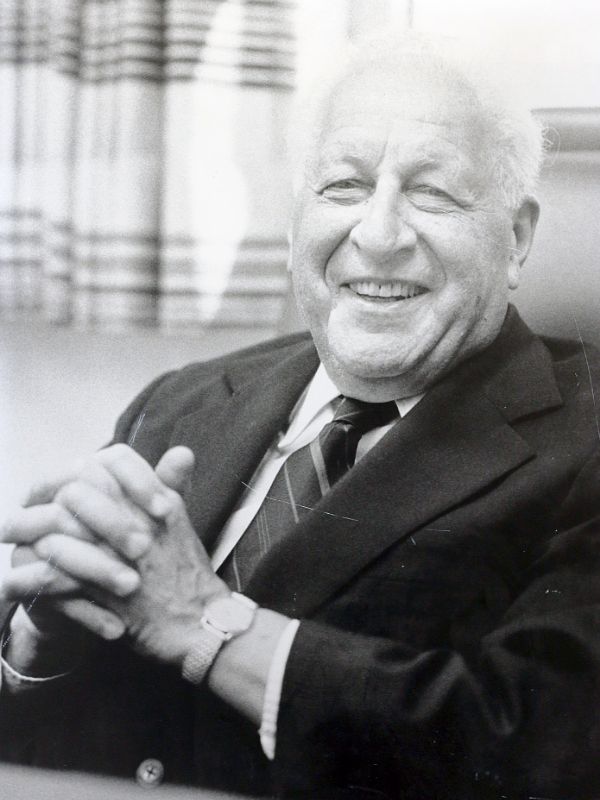A Brief History of the Department of Cell Biology
Matthew Scharff, MD, and Arthur Skoultchi, PhD
The Department of Cell Biology was established in 1961, eight years after the founding of the College of
Medicine. Dr. Harry Eagle was recruited from the National Institutes of Health to form a
new Division of
Biology which would include four new Departments (Cell Biology, Genetics, Developmental Biology, and
Molecular Biology). At that time, the still quite new College of Medicine had an excellent research core
of
traditional basic science departments (Anatomy, Biochemistry, Pharmacology, Microbiology and
Physiology) with distinguished faculty and it had already achieved a significant national presence.
However, the chairs of Medicine, Neurology and Pharmacology (Drs. Irving London, Sol Korey, Alfred
Gilman) and other members of the faculty leadership realized that a revolution was occurring in biology
with the emergence of the central roles of genetics and molecular biology. They persuaded the Dean that
a new infusion of faculty and with somewhat different perspectives was needed. Money was raised to
construct the Ullmann building to house the new departments as well as to provide for
expansions of some
existing departments.
 Dr. Harry Eagle, Founder of the Department of Cell Biology
Dr. Harry Eagle, Founder of the Department of Cell Biology
Dr. Eagle was a
microbiologist and immunologist who shifted directions and became the most
cited scientist in the world for his description of Eagle’s medium which allowed
investigators to grow animal cells in in vitro culture. His addition of penicillin and
streptomycin to the culture medium also made it possible to carry out
experiments with animal cells on the laboratory bench rather than in sterile
hoods. This simple change in tissue culture practice had a profound impact as it
enabled technical approaches that were until then only practiced in bacteria
genetics and bacteria molecular biology. Dr. Eagle also had an outstanding record as a science
administrator, having reorganized and upgraded the entire
National Cancer Institute and subsequently recruited exceptional young
scientists to the Laboratory of Cell Biology at the National Institute of Allergy and Infectious
Diseases.
While still at the NIH, he decided that the best way to study the molecular biology of animal cells was
to
infect them with viruses, since the large amounts of viral proteins and nucleic acids produced during
infection allowed their study with the then limited tools available. While not a virologist himself,
Eagle
recruited junior faculty who applied this approach in their research.
Importantly, his first recruit was Dr. Jacob
Maizel, who shortly thereafter invented
SDS gel electrophoresis and showed it could be used to separate and study
proteins and nucleic acids purely based on size. The development of SDS gel
electrophoresis was a technological breakthrough that enabled the faculty in
the Department of Cell Biology and other departments to make new, often
paradigm changing discoveries. These achievements put the Department of
Cell Biology and other Einstein basic science departments on the map and
attracted first-rate fellows and visiting scientists to the Department and the
College. Dr. Eagle also demanded a high level of communication and
cooperation amongst the faculty and he promoted this by establishing shared
common equipment rooms and core facilities.
 Dr. Eagle congratulating Dr.
Scharff on his receipt of the NY
Academy of Medicine Award for
the Distinguished Contributions
to Biomedical Science in 1990
Dr. Eagle congratulating Dr.
Scharff on his receipt of the NY
Academy of Medicine Award for
the Distinguished Contributions
to Biomedical Science in 1990
The Department moved to the newly completed Ullmann building in 1964. In 1978, it
relocated again to its current location when the new
Chanin Institute for Cancer
Research opened. Dr.
Matthew Scharff assumed the chairmanship in 1972 and served
until 1983. He was followed by Dr. Jonathan Warner and then by Dr. Arthur Skoultchi in
1998. In November 2022, Dr. Ulrich Steidl became the 5th Chair as the department
enters a new phase of multi-disciplinary integration and growth.
Since its inception, the Department of Cell Biology has graduated 198 graduate
students (56 MSTP; 142 PhD) and trained more than 300 postdoctoral fellows who have
made major contributions to Science and Medicine.